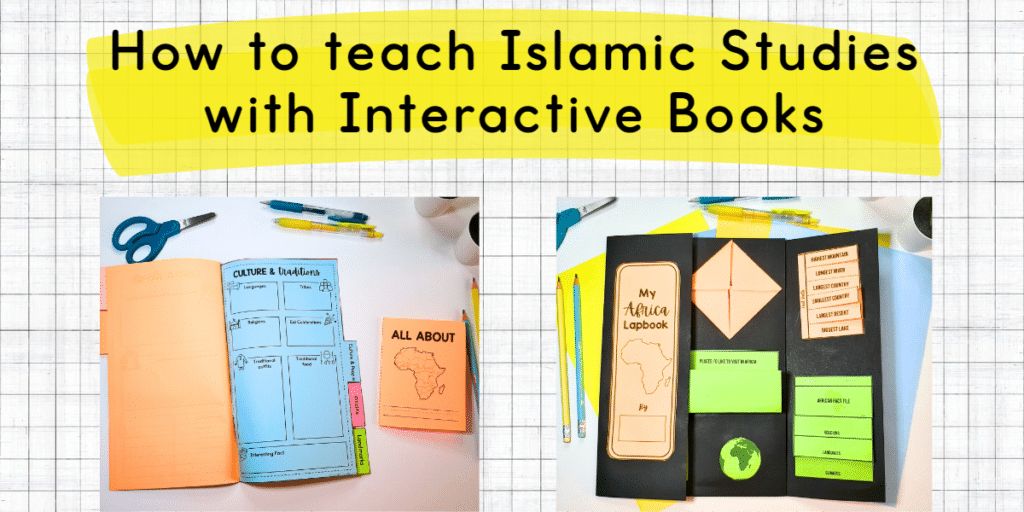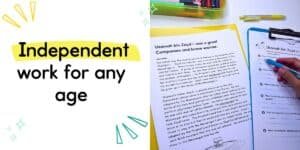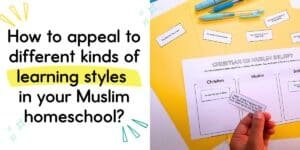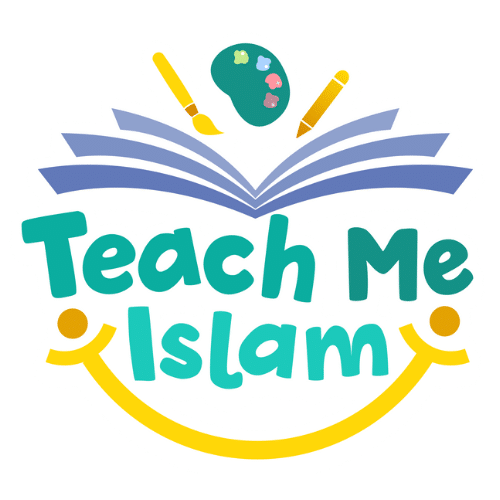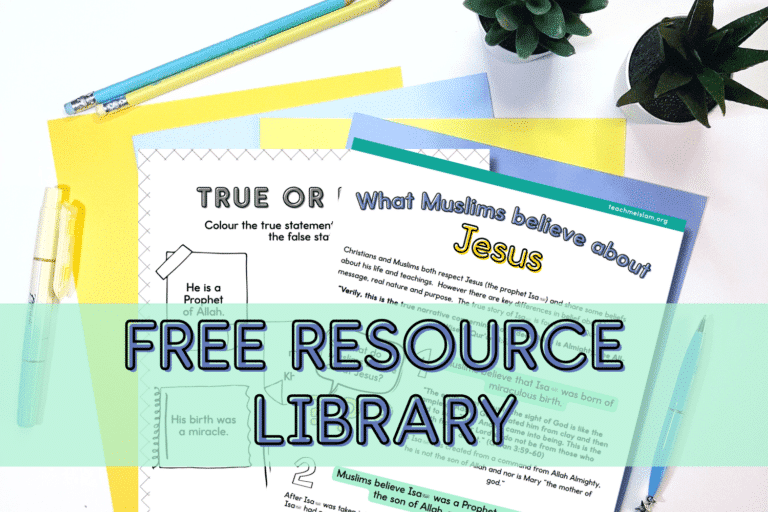Have you ever wondered how to teach Islamic Studies in a fun and engaging way? Sometimes the other subjects have beautifully illustrated textbooks and creative activities like experiments and art projects. We are not trying to compete but instead ensure that enough thought and effort goes into making the most important subject of all, interactive and engaging. Interactive books are a great tool to use to achieve that important aim. They enable the learner to be creative, responsible for their own learning and easily customisable. Did I mention they are perfect for homeschool as well? Want to know more? Let’s dive into what they are, their types, their benefits and how you can utilise them in your Islamic Studies lessons.
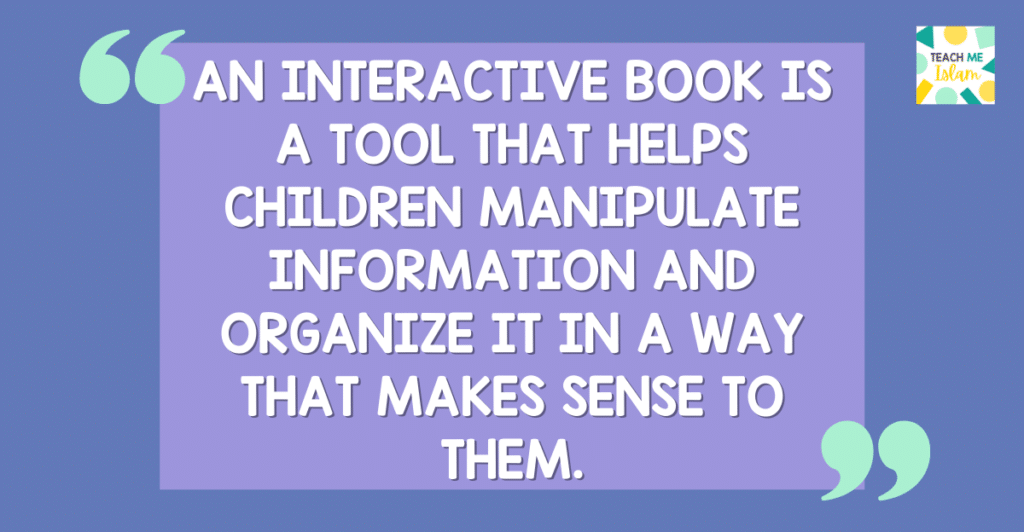
What is an interactive book?
An interactive book is a tool that helps children manipulate information and organize it in a way that makes sense to them. Interactive notebooks are not workbooks or scrapbooks. A student creates their own book containing information about a particular topic but crucially, they organise that information themselves.
There are lots of types of interactive books including, lap-books, mini-books, tab-books, flip-books, and interactive notebooks. They have different benefits so you can decide which one is most suitable for your subject matter.
What are the benefits of using interactive books to teach Islamic Studies?
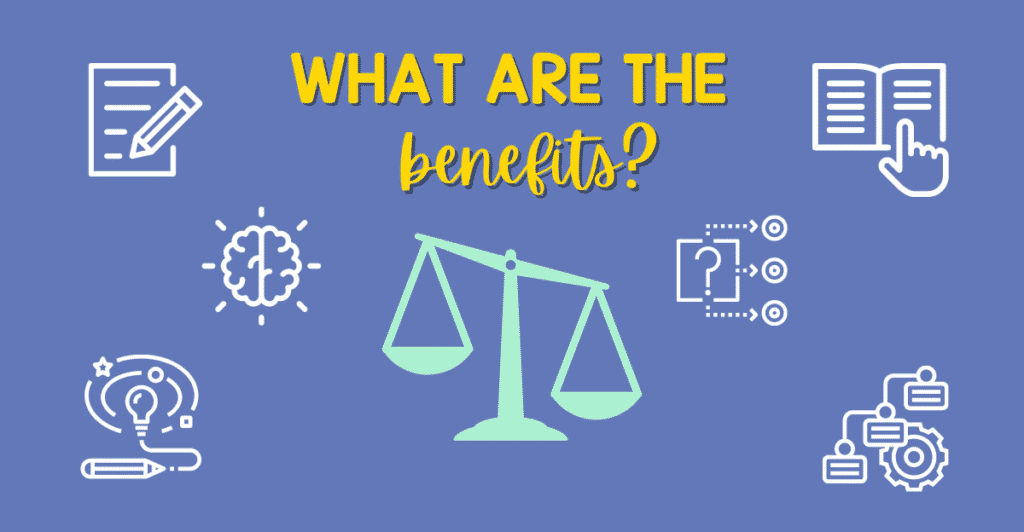
Interactive books have so many advantages over usual notetaking. They are an active form of learning. Students organise the information in a way that appeals to them, logical minds can use charts, creative kids can illustrate and busy fingers can make lots of flaps and movable parts. They can also highlight the points that are significant to them. An interactive notebook all about lessons from the life of Abu Bakr As-Siddiq (may Allah be pleased with him) can have wildly different content whilst all being relevant and beneficial.
Organising the information they have been given, really makes a student reflect on what they have learnt, rather than passively filling in blanks or boxes on a worksheet. They are also very personal and the ability to choose colours and design encourages a sense of ownership.
Islamic Studies is so different to all the other subjects because everything is relevant and applicable to our lives. Students are gaining knowledge that is transformative inshaAllah. It must be treated as different to other subject matter that can be forgotten or just learnt for a test or short period of time. It’s absolutely key that it is applicable to their lives and interactive notetaking helps to encourage that connection between the knowledge and themselves.
As the interactive notebooks are both personal and attractive, students naturally look over them and revise the subject matter. In Islamic Studies, revision is key as all of the information studied is relevant and important to remember.
Just some of the skills involved in creating interactive books are:
- Writing
- Reading
- Illustrating
- Researching
- Summarising
- Analysing
- Sequencing
- Identifying cause and effect
- Recording
- Referencing
- Developing vocabulary
Why are interactive books perfect for homeschooling?
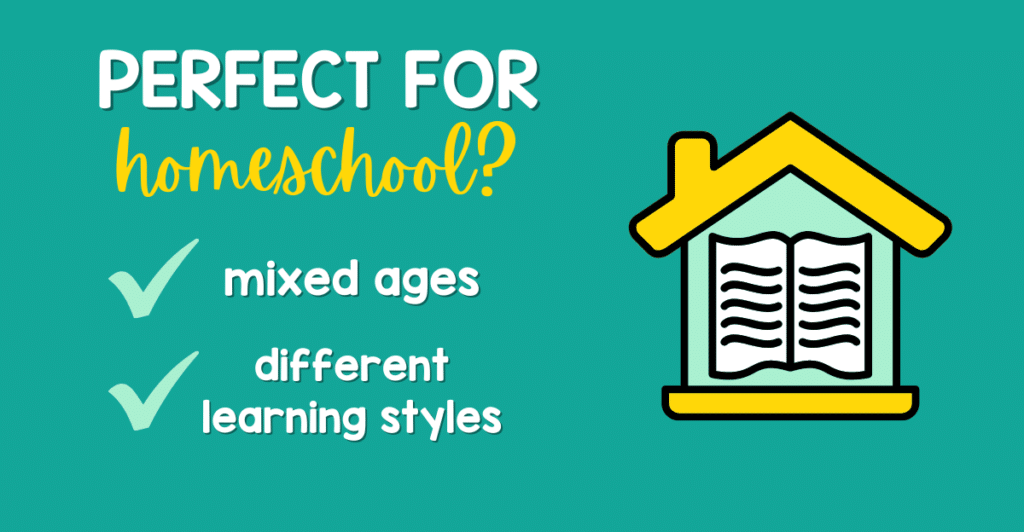
Lapbooks are a staple of homeschooling. When the trend for interactive notebooks in the classroom took off, homeschoolers must have been chuckling. They have been a key part of homeschools for decades. The difference is mainly that interactive notebooks are used for longer schemes of work whereas lap-books are usually just for one topic. What makes interactive notebooks perfect for homeschools is their ability to be differentiated for various ages and abilities. Early writers can fill in blanks whereas older students can compile an entire lapbook themselves If you want to learn more about differentiation and other techniques to teach a group of kids of mixed ages and abilities, check out this blog post.
What are the different types of interactive books?

There are lots of different types of interactive books. Here are some of the main types you may encounter.
Lapbook: A folded card (normally a file folder) forms the base and foldables and other interactive pieces are glued to it. It is normally on a single topic.
Interactive Notebook: An entire notebook full of foldables and graphic organizers. There are normally on a subject or theme.
Flipbook: These are interactive graphic organizers that you flip up to reveal different sections.
Tab-book: These are interactive graphic organizers with tabs to show the different sections.
Mini-Book: These are simple foldables using one piece of paper that form a miniature book on a topic.
How do I choose which interactive book to use?
Your interactive book selection will depend on your subject matter. If you are covering an entire subject, for example, seerah or the alphabet, an interactive notebook would be a great choice. Lapbooks are great for mini topics such as wudhu, biography of a companion or a continent study. Tab-books are great to cover different aspects of one topic such as prayer (the obligations, conditions, sunnahs) or a country study. Flip-books are great for something that needs to be reviewed frequently as they can be carried around, the five pillars would make a great 5 page flip-book. They can be used for other topics too, grab your free Abu Bakr As-Siddiq (may Allah be pleased with him) flip-book here. Finally mini-books are perfect for younger learners, they fit into little hands and they are short and sweet!
Here are some examples of each type you can view in the Teach Me Islam store:
Interactive notebook
Lap-books
Abu Bakr As-Siddiq (may Allah be pleased with him) lapbook
Africa Continent Study Lapbook
Arabian Peninsula Unit Study Lesson 1 (free)
Tab-book
Flip-books
‘Amr bin Al-Aas (may Allah be pleased with him) flipbook
Free Abu Bakr As-Siddiq (may Allah be pleased with him) flipbook
Mini-book
How can you use them in your homeschool today?
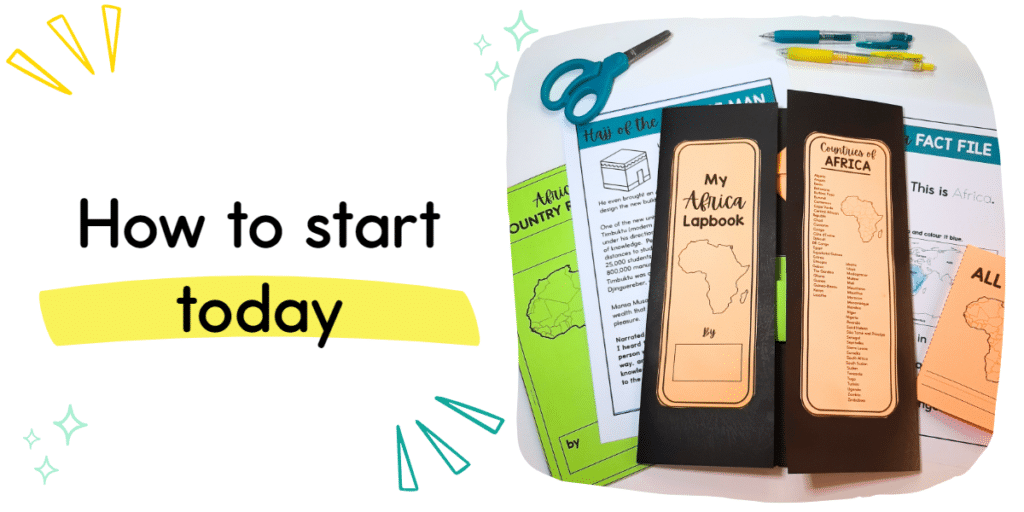
You do not need to purchase anything to make your own interactive books. The above examples from the store were just pre-planned and prepared examples of each type.
In order to make your own:
- Decide on your topic or subject
- Choose the interactive book you feel is most suitable
- Decide on the level of help your student will need
- Help younger learners decide how to organise the information (you may wish to design your own templates)
- Provide colourful craft supplies such as paper, pens, stickers.
6 Teaching Techniques to Teach Kids of Different Ages
What are Islamic Comprehension Passages and Why You Should Be Using Them

